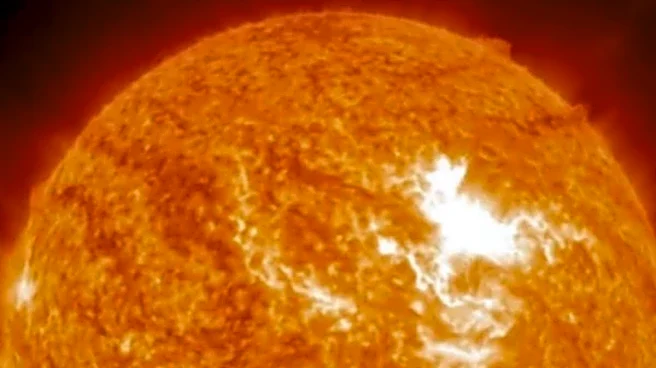On November 11, the Sun unleashed a solar flare, the strongest this year and the most intense since October 2024. And the next day, it hit Earth’s magnetosphere affecting satellites, GPS and even causing aurora sightings to Florida.
In a post on X, Mario Nawfal, founder of IBC Group, said: “THE SUN JUST PUNCHED EARTH IN THE MAGNETIC FACE – AND WE LOVED IT. On November 11, the Sun fired off an X5.1 solar flare – the biggest of 2025 – and hurled a plasma freight train at Earth at 600+ km/s. Twenty-four hours later, it slammed into our magnetosphere like a cosmic battering ram.”
🚨 THE SUN JUST PUNCHED EARTH IN THE MAGNETIC FACE – AND WE LOVED IT
On November 11, the Sun fired off an X5.1 solar flare – the biggest of 2025 – and hurled a plasma freight
train at Earth at 600+ km/s.
Twenty-four hours later, it slammed into our magnetosphere like a cosmic… https://t.co/GgrrVmlAGU pic.twitter.com/IuXpM5ori5
— Mario Nawfal (@MarioNawfal) November 25, 2025
“NASA’s model shows it perfectly: Earth, a tiny blue marble at the center… Red zones whipping past like solar shrapnel… Magnetic field lines bending, twisting, screaming under the impact. This is what a geomagnetic storm looks like when the universe decides to remind you who’s in charge.”
According to Space.com, the X5.1-class eruption from sunspot AR4274 is this year’s most powerful solar flare. It peaked at 5am from sunspot AR4274, which has been bursting with activity in recent days. The blast triggered strong (R3-level) radio blackouts across Africa and Europe, disrupting high-frequency radio communications on the sunlit side of Earth.
This was the latest in the series of intense flares from AR4274, which also produced an X1.7 flare on November 9 and an X1.2 on November 10.
The solar storm caused “Satellites jitter. GPS drifts. HF comms get scrambled”. “And the sky throws a rave – auroras blooming far south of where they have any business being. With the Sun climbing toward peak activity, this won’t be the last hit,” Nawfal added.
He also predicted “more storms, more skyfire, and at least one ‘Why is the aurora over Chicago?’ moment before 2026 is done.”
According to NASA, “Solar flares, which are intense flashes of light, do not themselves cause geomagnetic storms — but they are often associated with coronal mass ejections, giant eruptions of solar particles, that do. The three back-to-back flares in the middle of this image, erupting on Nov. 9, 10, and 11, were accompanied by coronal mass ejections that triggered the intense geomagnetic storm of November 11-13, which led to aurora sightings as far south as Florida.”
















